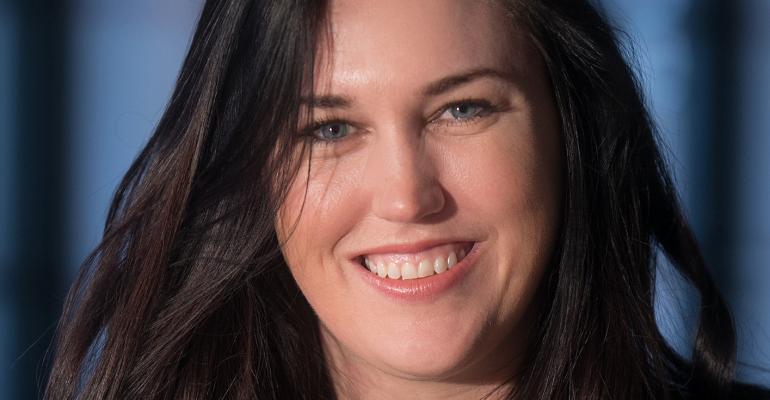It’s nearly 2020, and it is time we get real about same-sex marriage. And, as event professionals, it is our responsibility to ensure each and every one of our clients feels welcomed and supported regardless of gender or sexual orientation.
It’s not just about accepting any client who walks in the door; it is about being an ally that is committed to lifting the LGBTQ+ community as a whole. Being an ally is more than just putting a rainbow filter on your social-media profile picture or sharing pictures of you with your LGBTQ+ friends. These actions do not lead to results; they are merely for show.
Instead, it is about using your voice, giving back, and standing up for the entire LGBTQ+ community--not just the few people you know personally. It is about making a genuine effort to not just promote acceptance and equality, but also to tear down heteronormative standards.
Most importantly, a true ally will do all of this with the intention of building up the LGBTQ+ community and equal human rights--not just because your gay cousin means a lot or because you heard it would be good for business. With that in mind, here are a few authentic ways to become an ally for your clients, their loved ones, and everyone else who identifies as LGTBQ+.
Work with like-minded professionals.
Collaboration is a major part of the special event industry and your choices should capture your company values. Do not work with an openly anti-gay vendor who will make your client(s) dread their wedding-planning process. Instead, stay connected to other equality-minded professionals and nurture those relationships. If you know vendors who are unintentionally using gendered language or do not understand their prejudices, be a resource for them and explain how their words and actions impact others.
Stand and speak up.
Always stand up for your LGBTQ+ clients (and anyone else) if you see them being discriminated against. For many decades, their voices have been silenced, and many are still learning how to speak up for themselves. Having the support of allies builds confidence and shows your clients that they do not have to feel alone, because you are willing to go to bat for them.
Avoid making assumptions.
You cannot go into a client meeting with assumptions about a person’s gender identity or sexual orientation. A seemingly heterosexual couple could actually be a trans female and a bisexual male. One or both might identify as pansexual. You simply cannot know from appearances, so leave your biases at the door and go into it with an open mind. Request their preferred pronouns, but don’t dig any further--let them open up if they want to.
Likewise, don’t make assumptions about what they want in their wedding, either. There are many heteronormative traditions that LGBTQ+ couples do not want to embrace. There may be nobody to walk either down the aisle, and there may be no desire for a bouquet or garter toss. Maybe they want to walk down the aisle together--it’s their choice! Let your clients guide you towards their preferences and take note to ensure their needs are met.
Own your mistakes.
If you are still learning the ins and outs of LGBTQ+ culture, you have to learn to own up to your mistakes and forgive yourself.
Be open with your clients about your understanding, and be prepared to listen to their perspective. You may be the authority on color palettes or cake flavors, but you need to humble yourself and let them teach you.
For example, if you use the wrong pronoun, apologize, correct yourself, and move on. It does not need to be a big deal as long as you recognize the transgression. Dwelling will only make you and your client feel uncomfortable.
Be proactive.
The wedding industry is particularly heteronormative. Suddenly, same-sex couples feel as though they have to come out to every vendor they inquire with--and fully expect a negative response from at least a few.
Save them the stress by showcasing that you are equality-minded on your website and social media. It will take the worry out of the equation, and they are 86 percent more likely to inquire about your services (Source: CMI Marketing Annual LGBTQ+ report).
Give back to the community.
Whether it’s a financial contribution or a gift of your creative services, it is important to give back to the LGBTQ+ community. Members of this community experience hate and negativity, so use your privilege and kindness to show that there are many people who do care. Donating to LGBTQ+ rights organizations is a highly effective actionable item.
The LGBTQ+ community has come a long way, but there is still so far to go. Right now, 7 million LGBTQ+ Americans live in 30 states across the U.s. without express and enduring state or federal nondiscrimination protections--meaning there are no strict laws in place to protect them from prejudicial behavior. There are grassroots organizations that are on the ground and making change happen, but they cannot do so without appropriate funding.
It starts with us. It starts with your language, your vote and your investments. You do not need to overhaul all of your marketing materials, social media and website imagery overnight, but it is important to start acting like an ally today.
Start small.
Learn more about the LGBTQ+ community and the challenges that they face each and every day. Education is the key to growth, so take that time to speak with members who identify differently. The more you understand, the better you can support your clients and the community at large.
Brittny Drye is the founder and editor-in-chief of Love Inc., one of the leading equality-minded wedding blog and digital publications. Her inclusive efforts have been saluted by the New York Times, The Advocate, OUT Magazine, Refinery29, NY Daily News, Cosmopolitan and more. She serves on the 2018-19 North American Advisory Board for the International Academy of Wedding & Events.




